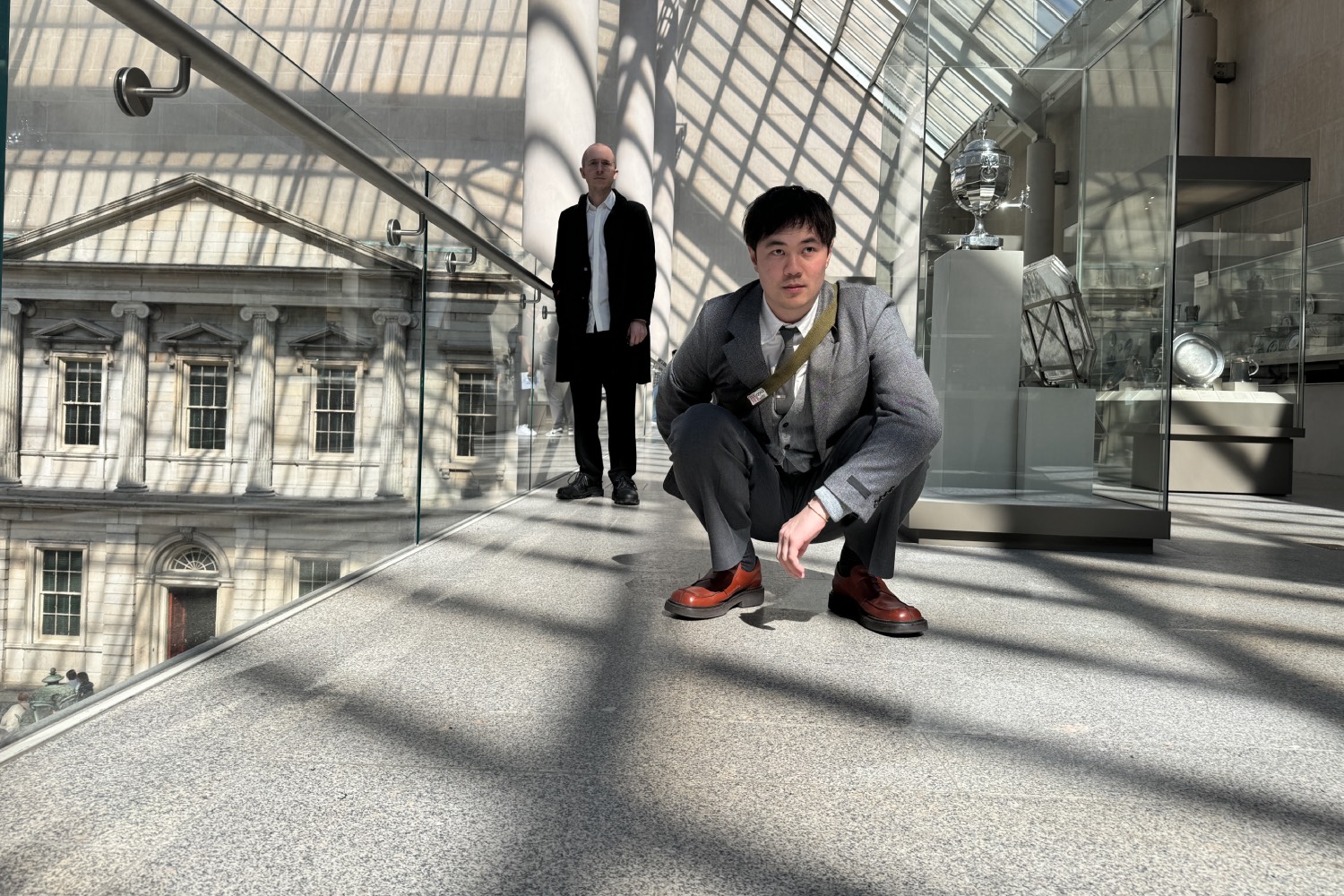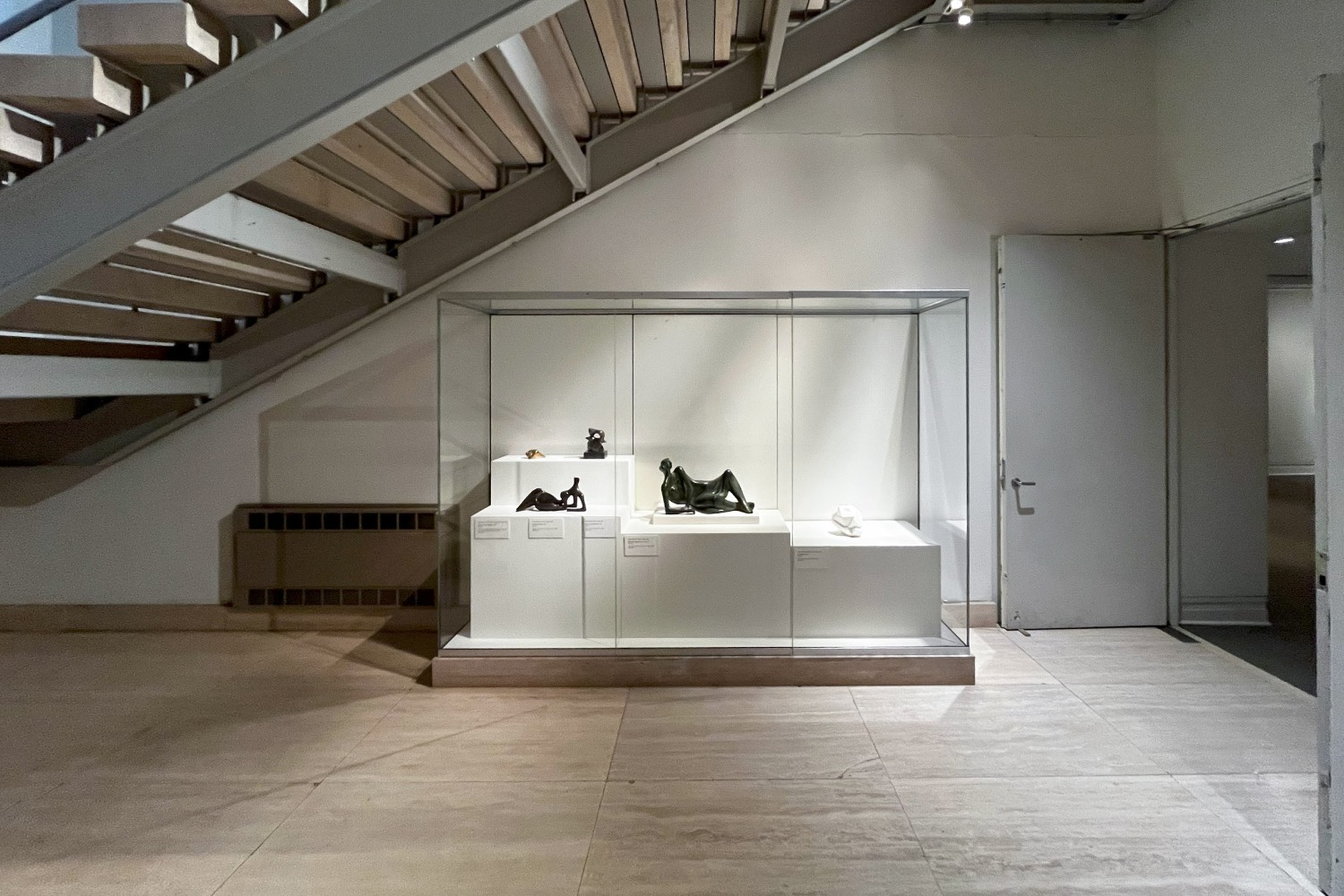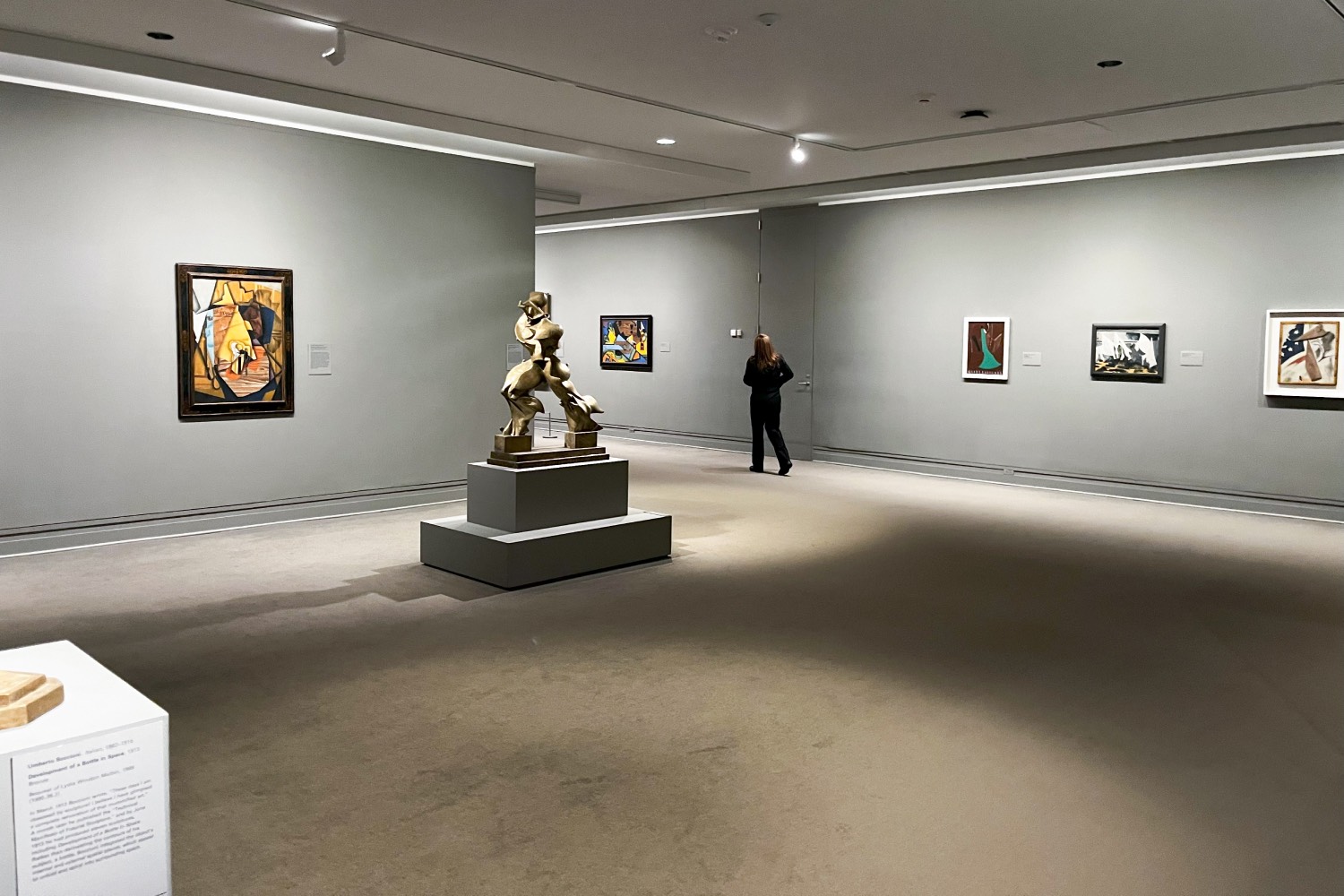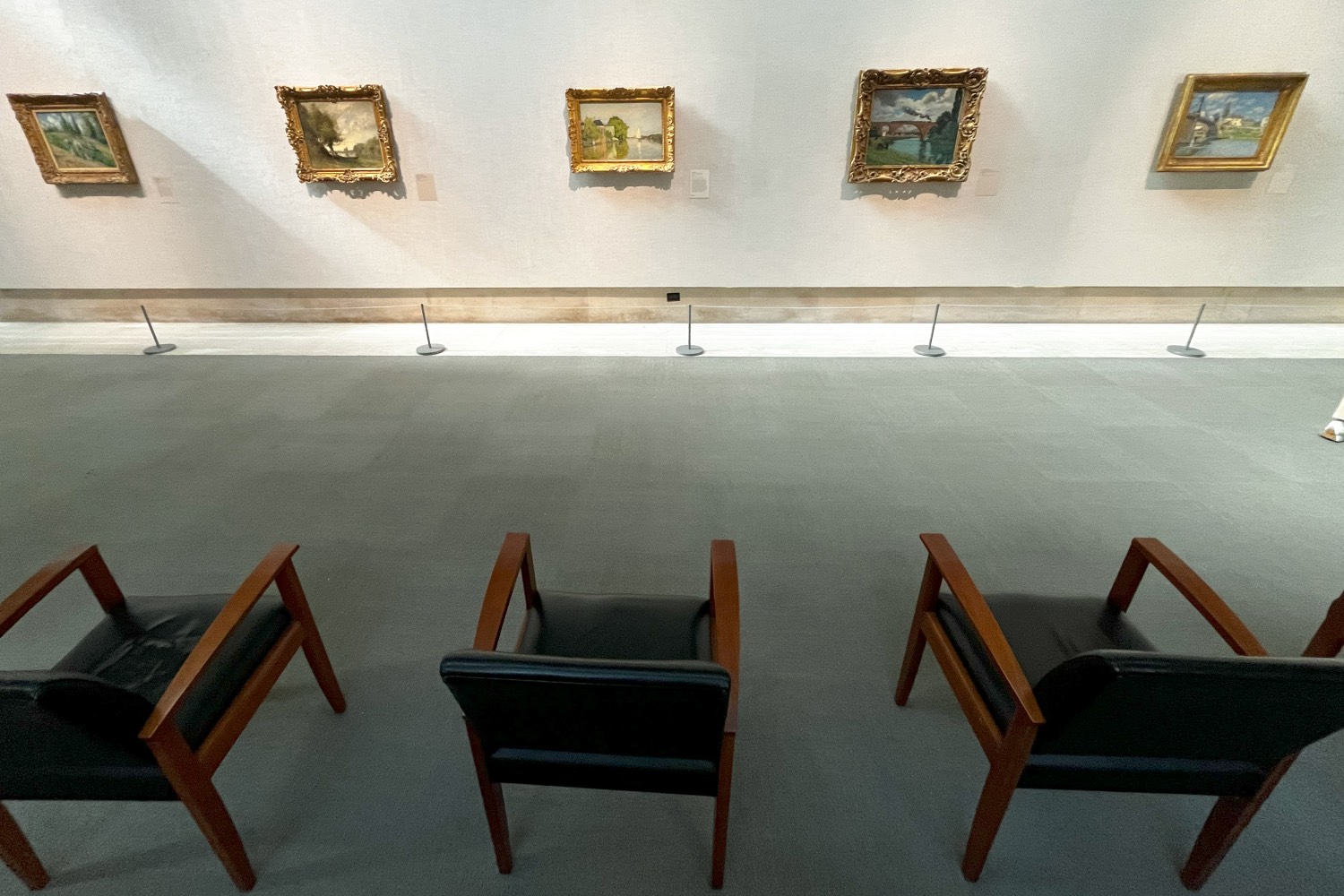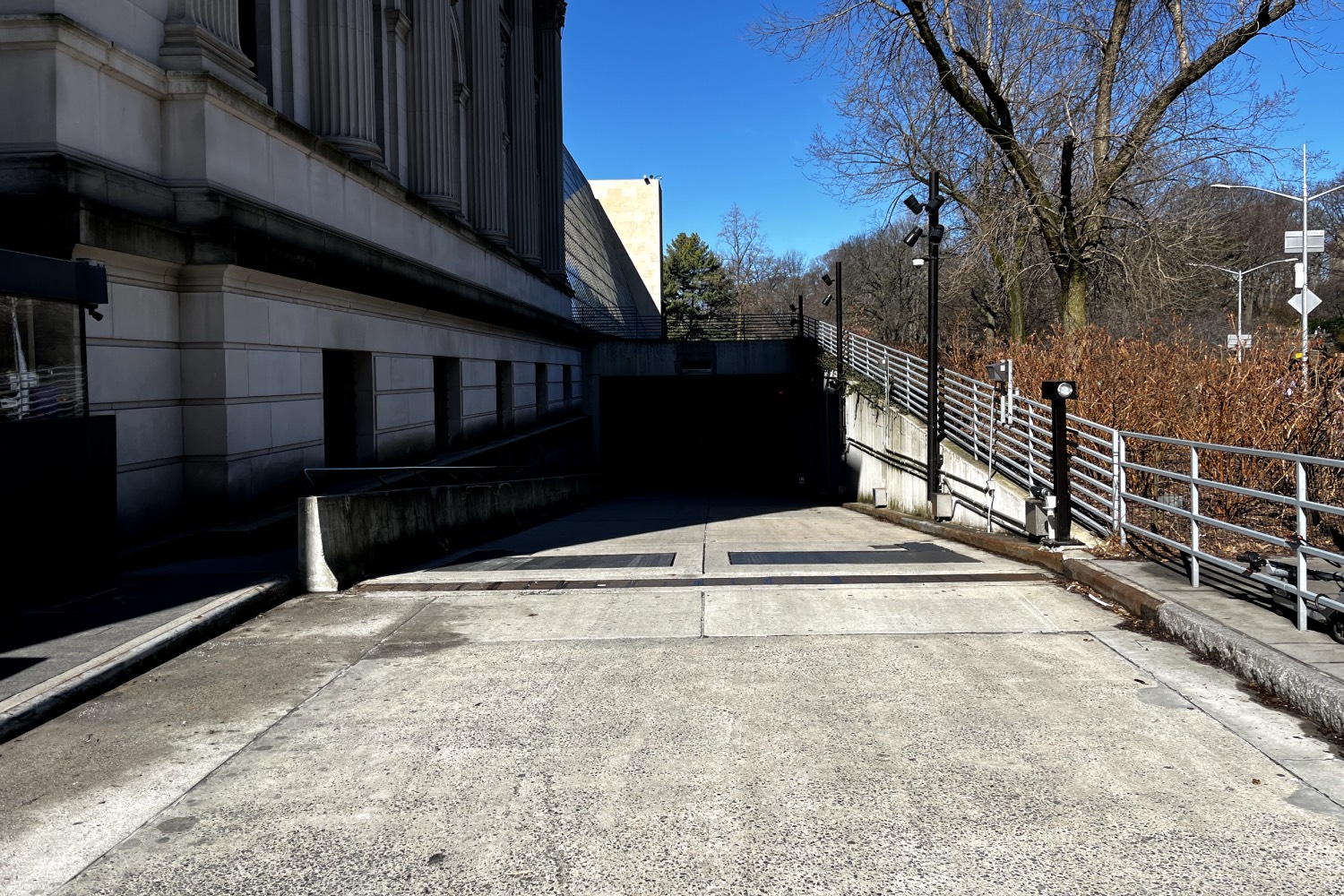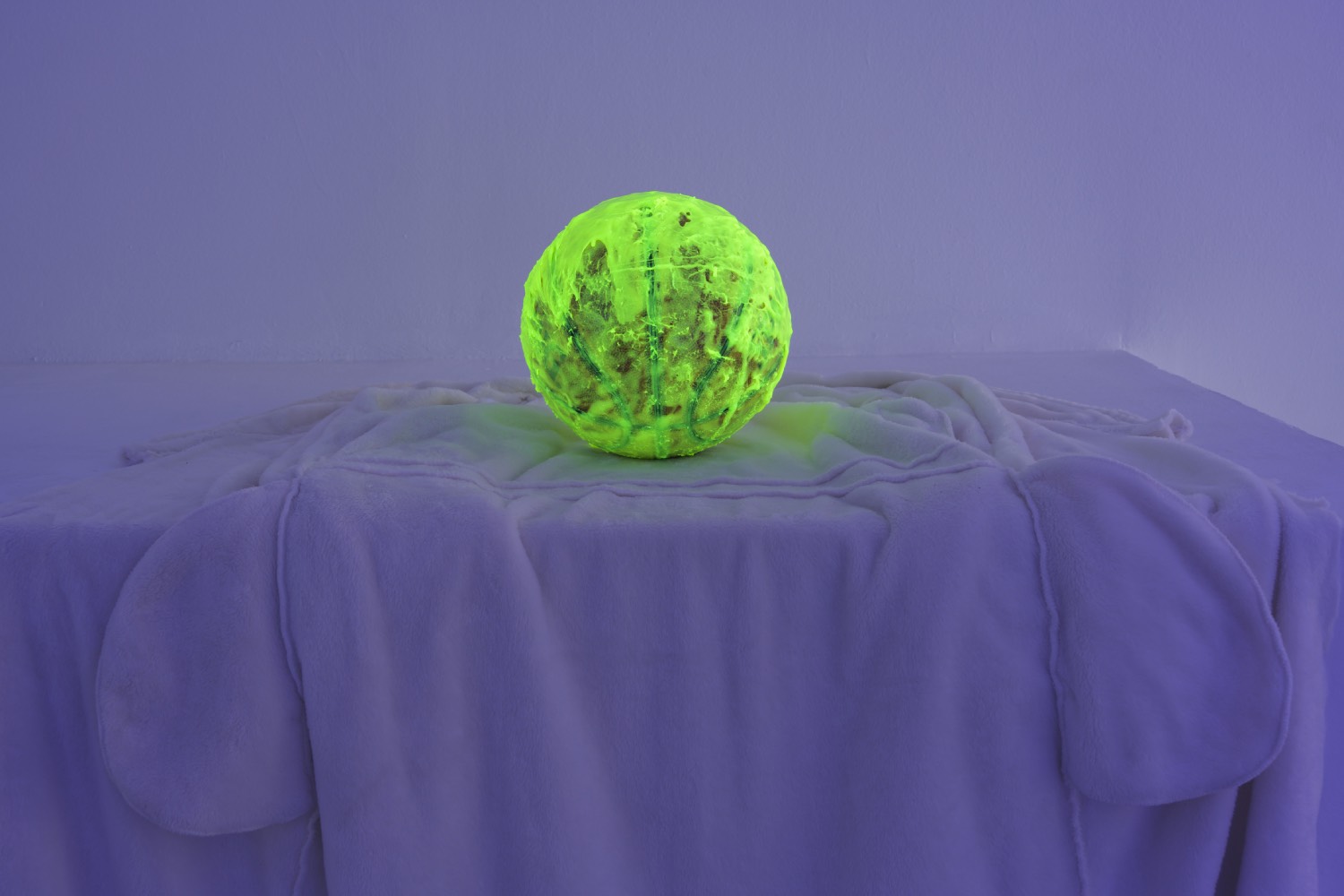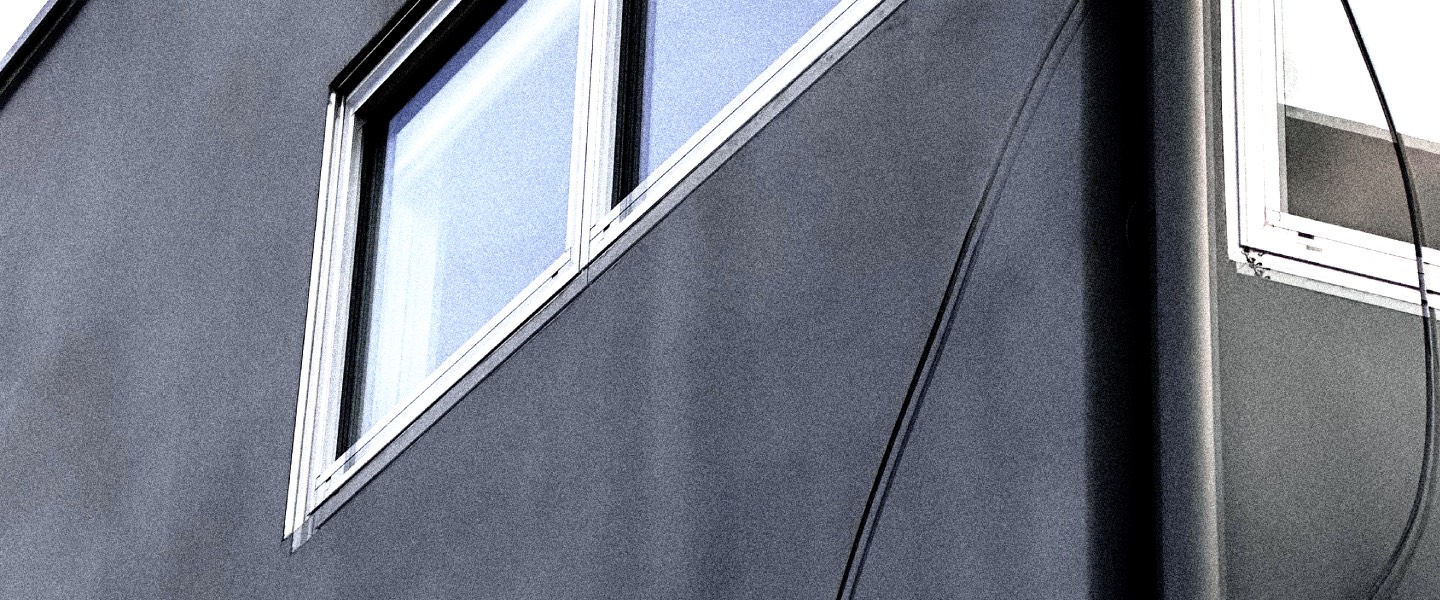An introduction: on Sunday, March 3, 2024, Michael Abel and Nile Greenberg of the architecture firm ANY met at the Metropolitan Museum of Art by way of a request from Luigi Alberto Cippini. The task at hand — to dissect the architecture of the Met as an anti-compositional mass — was one of endurance. The exercise took place during four hours of meandering in the vicinity of cafeterias, displaced architectures, relics, paintings, and more cultural connotations than one can imagine. It also came almost exactly two years after Frida Escobedo had been appointed as the new architect for the renovation of the Oscar L. Tang and H.M. Agnes Hsu-Tang Wing. One more wing — and another five hundred million dollars — added to a never-ending aggregation of buildings only bound by 5th Avenue.
ANTI-COMPOSITION AT THE MET
Michael Abel: You say “Anti-Composition.” I say, “Flying Architecture.” An architecture of expansion and wings. Need another? Raise five hundred million and fly higher.
Nile Greenberg: The show we’re standing in is sponsored by the Ford Foundation, which Kevin Roche designed.
MA Yes, the connection being that Roche designed many additions to the Met. Some wings feel like Wesleyan University, others like the Crystal Palace. All of these additions, not just the ones from Roche, make up a compositional aggregation of buildings. I wish it was on purpose, but it seems to be just a lack of foresight. Not many institutions or buildings in New York can afford it, but since the Met is situated in Central Park, it is not restrained by the typical New York grid. How could we describe the New York grid?
NG It’s a composition of grids; the grid is non-compositional, a traditional non-compositional technique. This is in the culture of congestion framework.
MA That’s right. So, this is a compositional mass.
NG What is anti-composition versus non-composition? Maybe this is “figure-figure” rather than “figure-ground.” Figure-figure obliterates the compositional through addition and superimposition.
MA I would like to find the Temple of Dendur, but I can never actually find it.
NG The idea of knowing where you’re going while moving inside the Met is a contradiction.
MA Studying the Met is a bit perverse because it is not a formal city that has been produced through a bunch of authentic histories or something. It’s just an institution with the most resources in the world that has failed to understand growth.
NG It certainly has no sense of time. The Met only makes commissions. To acquire an object of existence, it must commission a serious study of its provenance and build its body of research to assure itself and its future patrons of its value. To buy an object is to commission research. This research protects it from pressure from governments, both the US and internationally. This formlessness — its anti-composition — is the center of its ability to acquire. If something is to be anti-compositional, it is meant to have no form.
The Met doesn’t collect art, it collects objects. It’s critical to remember this simple fact. This is not a fact as much as a methodology of capture. They see all forms of art and an object to collect or not collect. This allows it to collect what others cannot. History is what it collects, and collecting history neglects it, refuses it.
MA There’s really no logic.
NG It’s not for lack of trying. The Kevin Roche master plan started in 1967 and finished in 2015. The Cloisters, which predates the Met building, was practice for the routine here. They collected architecture from all around the world and assembled it into a new building that has no formal ending or place.
MA Did you see the guy that has two monitors set up in the inner room with a Rembrandt painting?
NG Yes, but what do you think about the Met as a piece of architecture?
MA The man with two monitors was sitting in a room, a gallery, with purple-velvet-paisley-patterned walls. It had a fake fireplace decorated with mystic Greek figures. Well, they probably took the fireplace away from somewhere, so it’s not fake, I just meant it was not functioning. The Rembrandt painting was above the fireplace and there was a gray-blue suede sofa — Cassina at best — in front of the fireplace. All this inside a Kevin Roche building addition. So, in a sense, I would say: “What Architecture?” The Met collects the most significant architecture in the world and then places it inside a building that rejects any sort of attitude. There is something about an institution with all the resources in the world failing so badly. It’s hard for me to study the Met as an informal architecture in that sense. It’s as if the museum attended its first party with an open bar and lost control.
NG Is there a hierarchy between art and architecture that makes sense to us then? It’s true that the Roche additions are nice: brightness, strength, and confidence are competencies that register well in the Met.
MA This Coca Cola is really strong and it’s in a 100% recycled bottle, isn’t that nice? The Met isn’t trying to disappear, as happened to MoMA after the Yoshio Taniguchi renovation.
NG The Met doesn’t understand what it wants from architecture; it treats architecture like it can be both an artifact and a vitrine. When the Met collects something, they really collect it. Kevin Roche’s office worked on it for fifty years. David Chipperfield for ten years. And Frida Escobedo, well, I heard her office is in the building!
HEAT AND DEGENERACY
MA Let’s talk about the Crystal Palace’s contribution to architecture.
NG Joseph Paxton, who was a horticulturalist, figured out how to make a greenhouse that could grow rare plants from Brazil and Africa that England was stealing.
NG Joseph Paxton, who was a horticulturalist, figured out how to make a greenhouse that could grow rare plants from Brazil and Africa that England was stealing.
MA It was a biosphere.
NG That biosphere relates to the entire English colonial project, collecting species and plants, the Darwinian impulse. Paxton knew how to build one fast because he had built all these greenhouses before. He designed a system that they slapped together in twenty-two weeks. It was 1,851 feet long and 990,000 square feet. The event itself — the Great Exhibition of 1851 — was the same Darwinian impulse, but with culture. Meanwhile the Met was founded in 1870 and is 2,200,000 square feet today.
The winter garden is related to how museums preserve and display work. These rooms at the Met have a part in the whole relationship. This is just a big vitrine. I get what you’re saying about the lack of character, the lack of ornament.
MA Ornament is a derogatory word, though. Architecture has never been stripped so far away from any sort of cultural context.
NG You think architecture is less cultural now than it’s ever been? Clearly, architecture connects with people.
MA It’s a conversation about economies of scale, which is a scapegoat. Anytime someone talks about something beyond the simplest notion of “function,” it becomes an economic conversation. Then you start talking about class. Then you have someone like Lacaton & Vassal, who have somehow become untouchable.
NA For being morally pure?
MA For having no additives. But at the same time, they appropriate the primitive hut. They talk about their early days of performing their duties in Africa from France: “Our first building was this primitive hut, everything stripped away with the purest form of architecture.”
NG It’s that translation from the African context to the French, using glass and plastic and not taking any of the aesthetics with them. Only the part that they deem “contemporary.” That translation, I think, is what annoys you the most.
MA Let’s try to put this together. Adolf Loos said that he had stripped away ornament because he deemed it degenerate: he was performing a racial cleansing of architecture, stripping away of all culture and calling it a crime. Lacaton & Vassal falls under the lineage of “ornament is crime,” only they think that an appropriation of what they call “primitive” is appropriate.
NG There is an infamous political cartoon of a person standing and looking at a sewer grate and comparing it to the Looshaus façade, in Vienna. The façade looks like literal trash. For 432 Park Avenue, Rafael Viñoly says he got the idea from a trash can. There is a model for architects to examine codified objects, take the ones people don’t find beautiful, and transform them into architecture. An absolutely surefire way to have a successful career. Frank O. Gehry using cardboard, Denise Scott Brown using Las Vegas, Rem Koolhaas using OSB and popular culture.
MA I find it patronizing.
NG There’s always a way of making something luxurious out of trash.
MA Let me read it. In the essay “Erecting the Skyscraper, Erasing Race,” Adrienne Brown stated that like Adolf Loos, “who famously found the use of ornament in contemporary design to be a ‘symptom of degeneracy in the modern adult’ that was a holdover from ‘alien’ and ‘primitive’ cultures that the white western world had evolved beyond, we find Starrett similarly framing his organizational aesthetics in terms of sleek utility.” This is pure erasure. Sleek utility as erasure.
APOCALYPSE
NG There’s been a loss of faith in architecture. A loss in faith in form generating. The difference between you and them is they want to solve problems. Students are not making architecture, they only want to solve problems. They can’t get behind form as a part of today’s problem.
MA I’m interested in the idea of architecture as the coordination of the measurable to make something immeasurable. There is a general disgust towards architecture, the immeasurable. There is a very apocalyptic mindset right now, but as one says: Can you blame them?
NG I think they’re working in an apocalypse.
MA Are we in an apocalypse more so than any other time?
NG It doesn’t matter. Apocalypse is a cultural idea. We decide when we want to feel like we’re in an apocalypse or when we’re on the brink of utopia. In the 2000s, we felt like we were on the edge of a new technological breakthrough. Optimism drove every company to record heights. It’s the same sense of utopia of the ’60s and ’20s. But then, all these things came crashing down. We’re collapsing again. Attitude needs to be meaningful to people and you have to respond to archetypal thought. That’s the zeitgeist problem. Transcendence requires an interpretation of the epoch. The larger the cultural sense you can react to, the more meaningful your work.
MA I think I’m a critical regionalist.
NG The ’20s are interesting because they were on the precipice of a search for meaning. That period was a recognition of a coming crash. The collapse of meaning, interwar modernists had so much information, there was an overabundance of information. In the 1910s and ’20s individualistic artistic expression like Art Nouveau and modernism peaked. Then a dramatic cliff came, where objectivity became the aim. There was a collapse of meaning. Right now, we are living in a similar moment, where an overabundance of meaning or a reference point promotes individualistic authors.
Zaha Hadid and Frank O. Gehry define today’s zone, and the new generation is seeking objectivity and problem solving, which is why I’m relating it to this loss of meaning. People are reacting with a desperate search to find what matters other than self-expression. I’m not searching for objectivity in that way. Form is expression, but it’s also a reaction to individualistic narratives, which ties to a collapse of meaning. In other words, a desperate search for meaning.
MA The idea that meaning has collapsed is primarily a white point of view. Because no other culture would ever say that.
NG People are searching for meaning more than ever, that’s my point. It seems people, especially from less dominant cultural groups, are looking into their own cultures for meaning more than ever.
MA So, the answer is to make architecture that means nothing?
THE MUSEUM
NG We’re designing a museum right now. What should we do?
MA I generally would disagree with the platonic approach of a shed. It has proved successful with projects like Dia Art Foundation, but what if you looked at the museum from a critical regionalist point of view? Start to perpetuate some histories. And when I say critical regionalism, I don’t mean designing architecture in a vacuum like early twenty-first-century Swiss architects. I’ve been doing this research in China. It feels inappropriate to add any language from this research to an architecture project in the USA. If I were to add a Chinese door to a Colorado museum, people would be like, “What the fuck are you doing?”
NG It’s a fucking virus. The other context is the global museum landscape; there is a sort of nonplace quality to museums.
MA We are designing this museum to have a place in its global context. The answer is to not make a nondescript shed that the world does not recognize.
NG Crisis-less acting. There is never a crisis at the Met. It can never be a shed. That is why there is never a crisis.
MA You can’t put the Met in Boulder.
NG The answer is certainly a highly specific place.
MA And a highly specific architect. If the client told you, “Nile, you’re hired. Here’s $100 million. I’m going to close my eyes for four years, I trust you, you’re an expert.” Would you still propose the same thing?
NG It would certainly become different, but I would still be interested in finding meaning for many people. There’s the white box, and then there’s a highly specific gallery. And then there’s a third option: the only model I can think of is the soundstage, which is basically a place that is infinite in its specificity because its context is invented every time rather than something specific that you react to. Artists should react to context in a specific museum. If you react to a modernist glass-and-concrete building like Kunsthaus Bregenz, you’re gonna make something related to that mode of mediation, abstraction. If you’re reacting to something culturally specific, you’re also going to have a reaction. In the antigravitational non-mediated time-and-space black box of a soundstage, the context can be the work.

